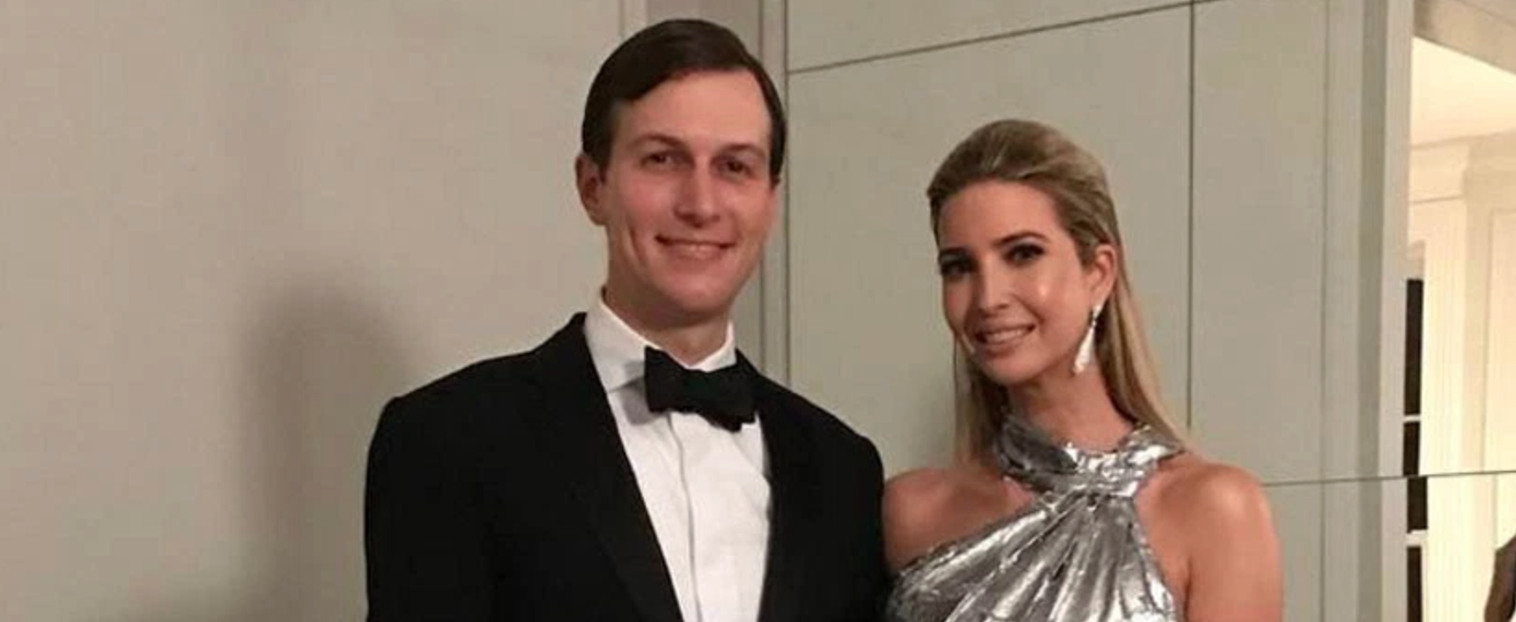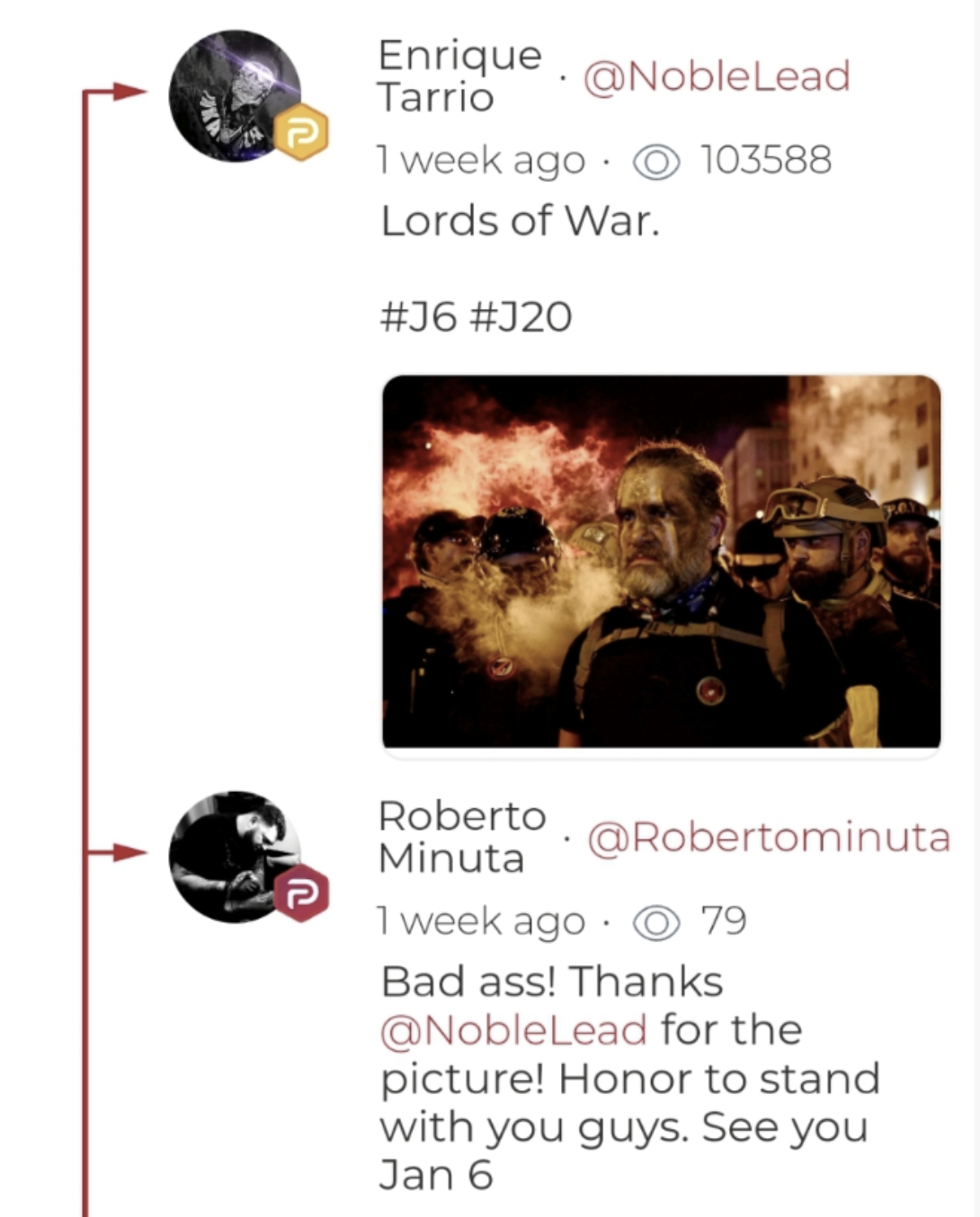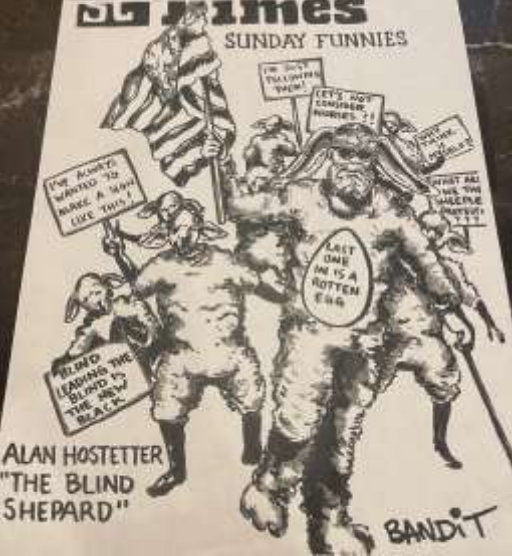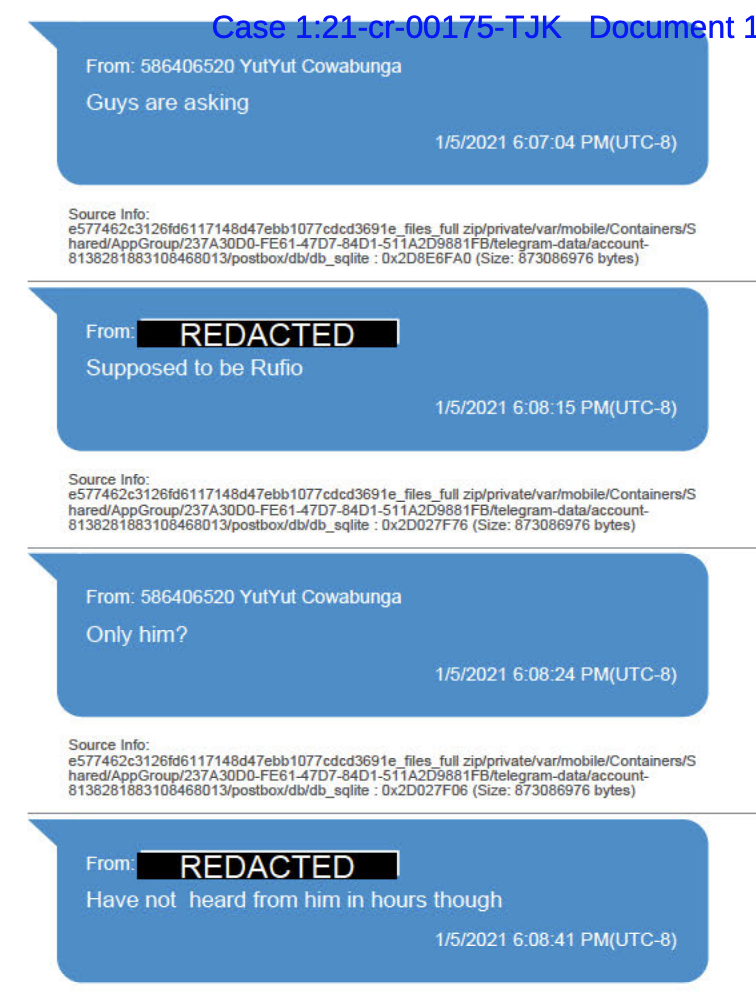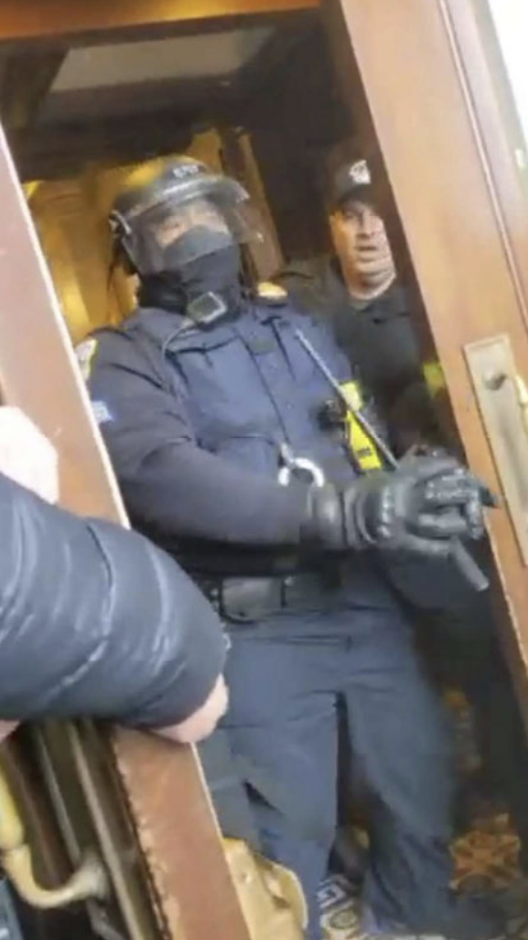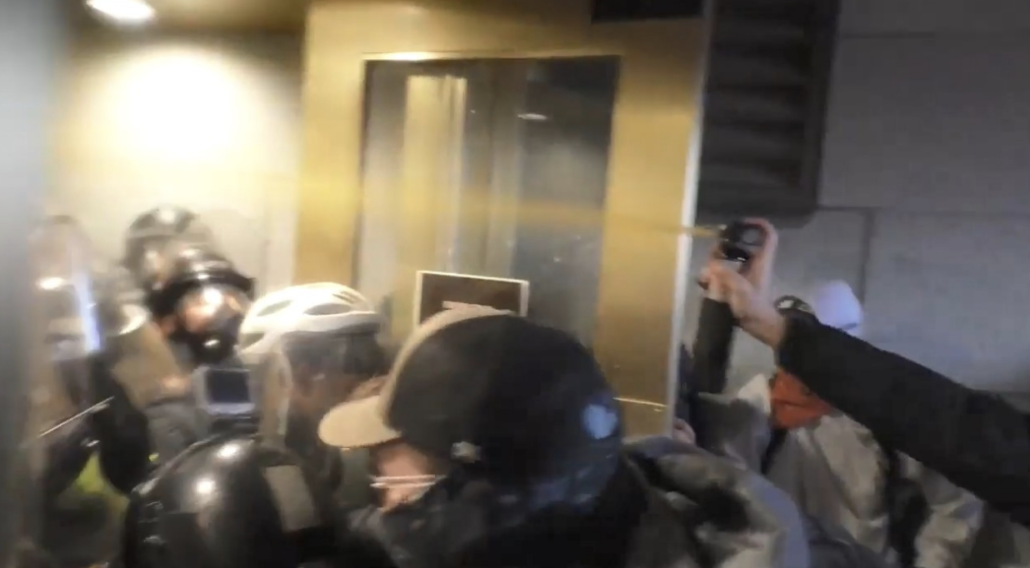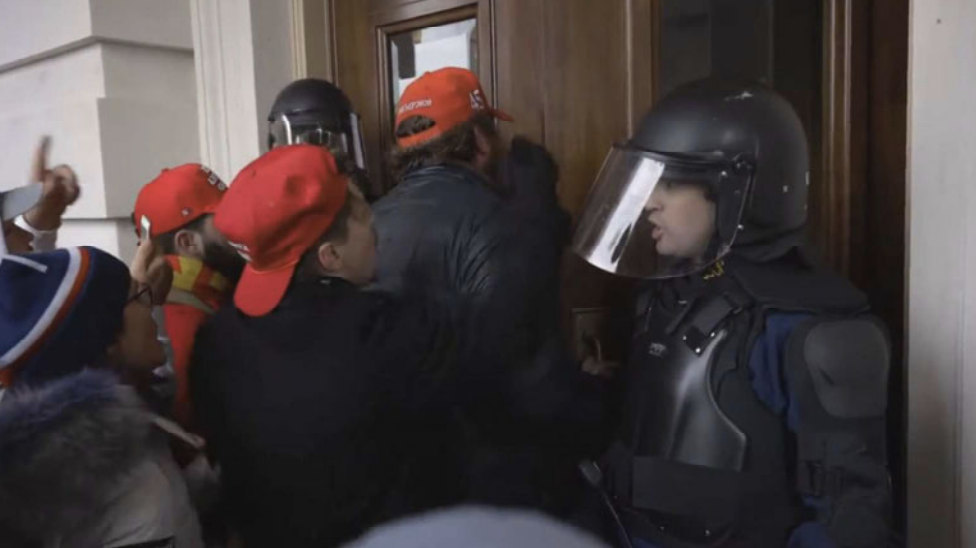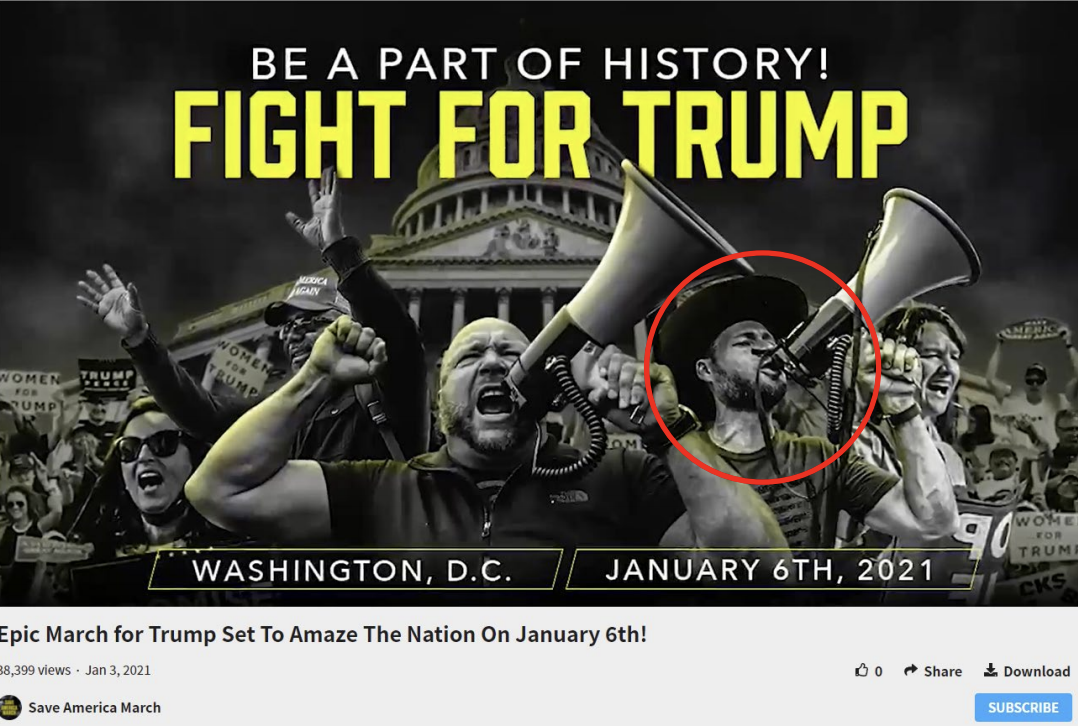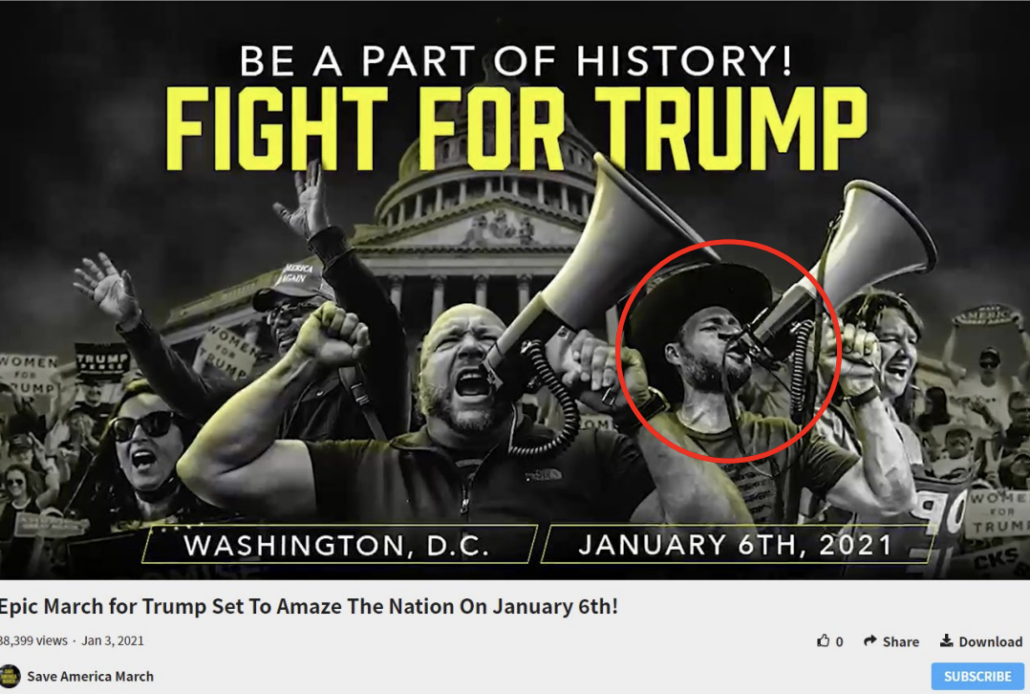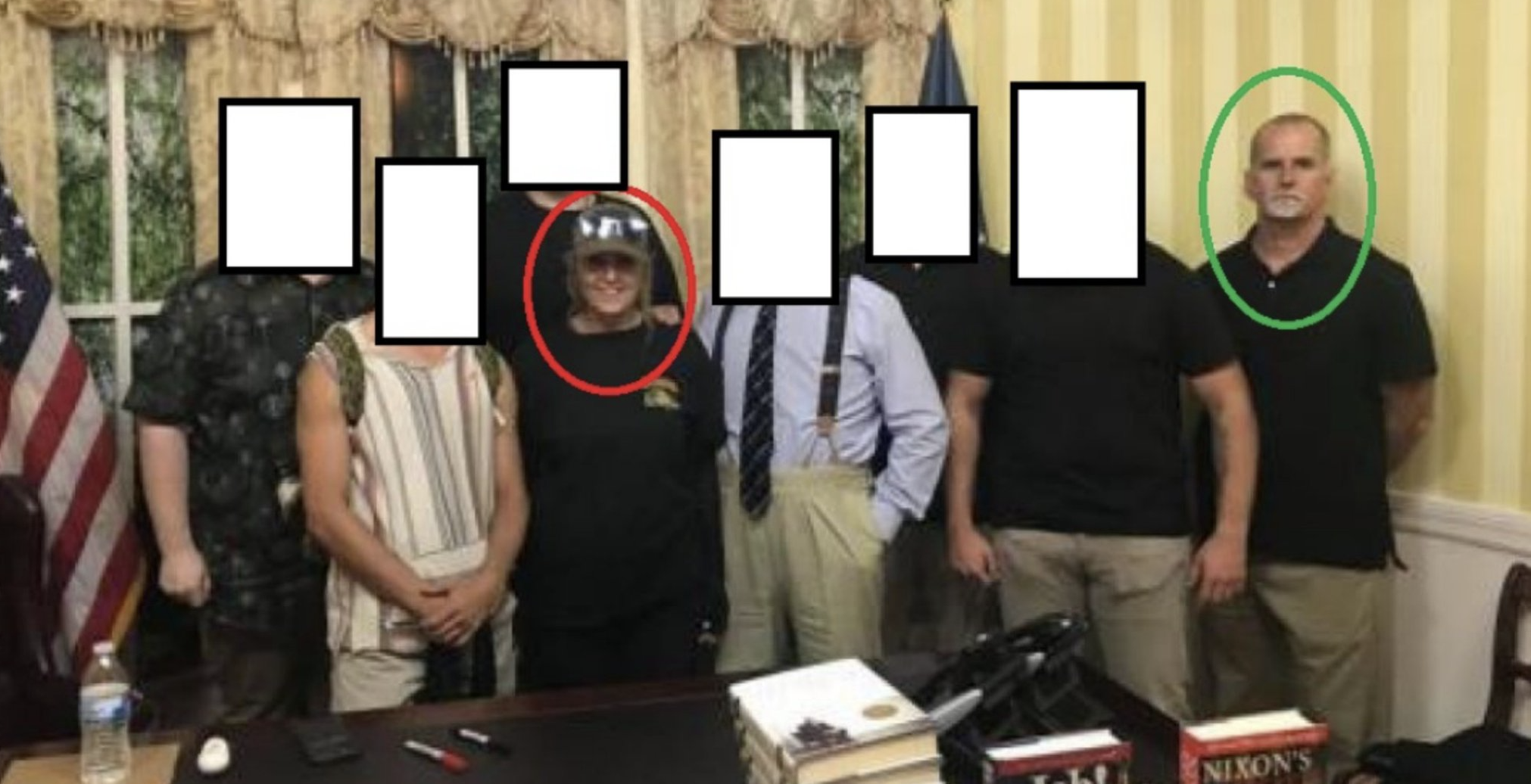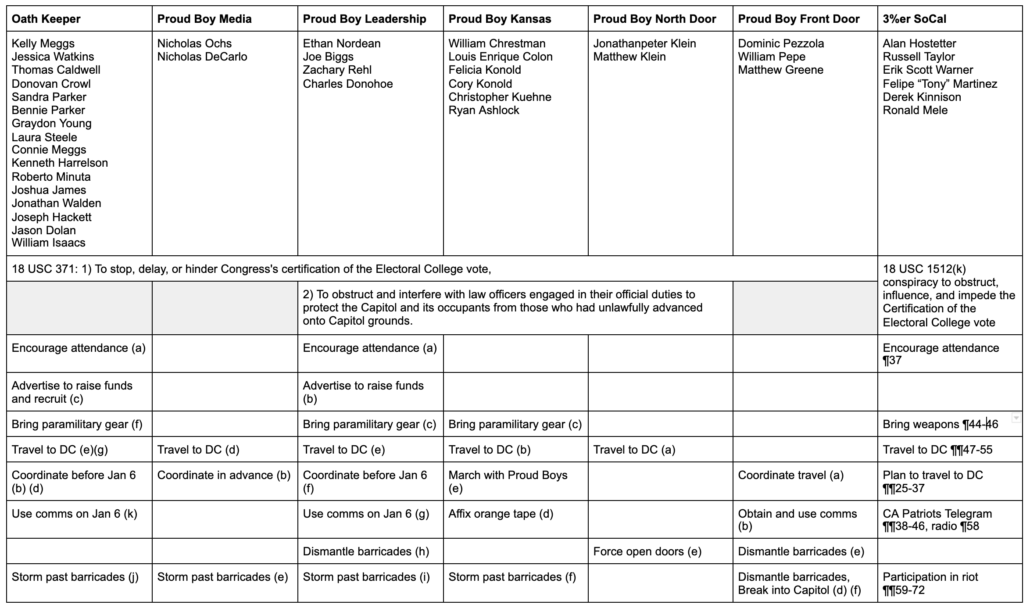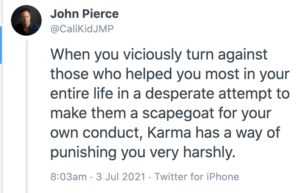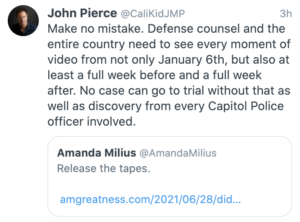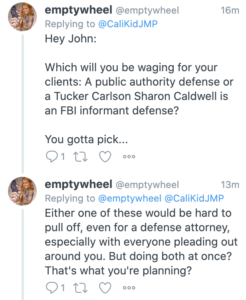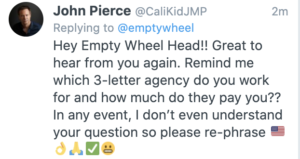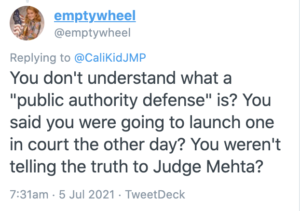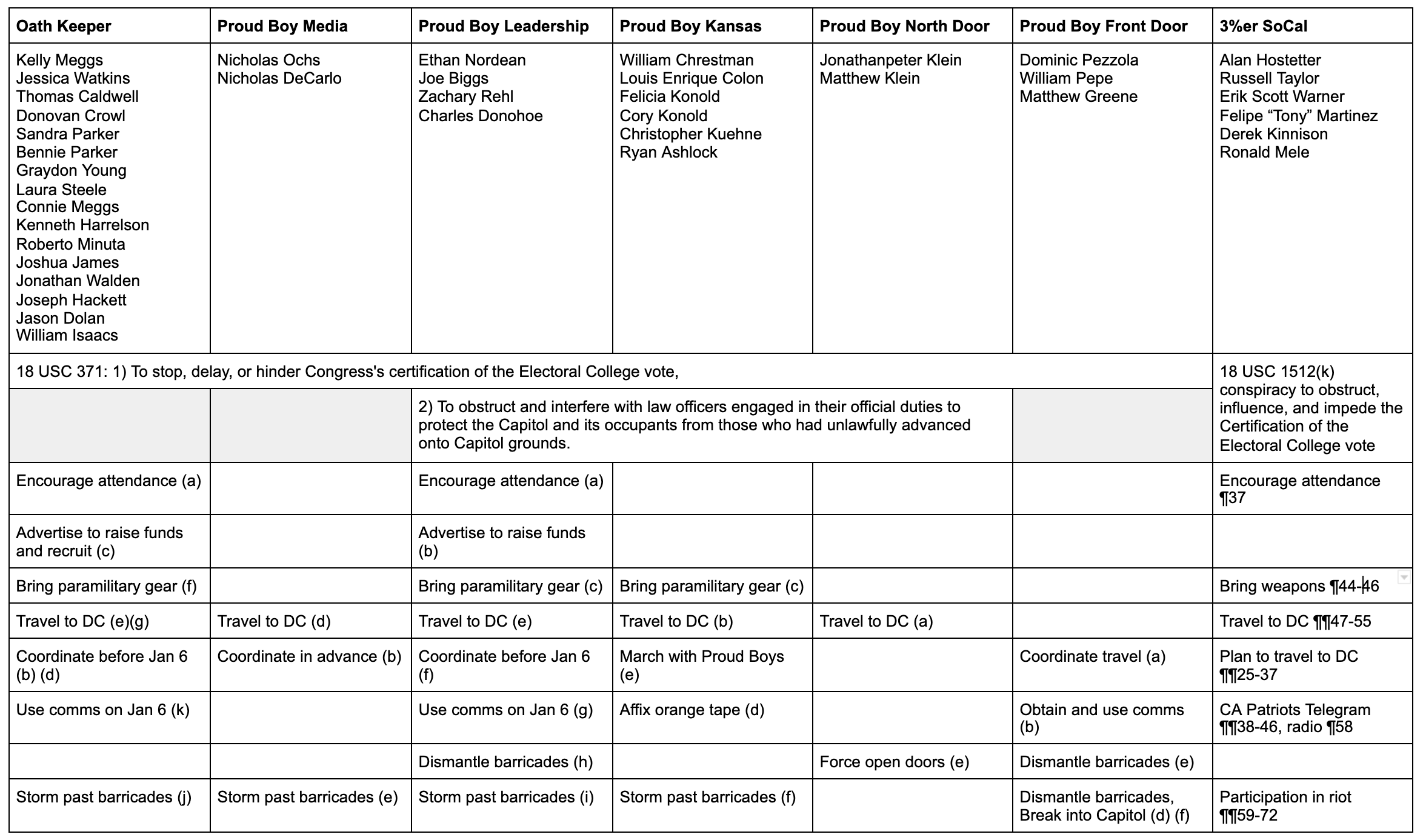Maggie and Mike Back Together Again, This Time on, or with, January 6 Corrupt Purpose
Yesterday, the NYT broke the news that Jared Kushner testified before Jack Smith’s grand jury last month and told them — in testimony that conflicts with other witness testimony — that his father-in-law really did believe he had won the election.
Federal prosecutors investigating former President Donald J. Trump’s attempts to overturn the 2020 election have questioned multiple witnesses in recent weeks — including Mr. Trump’s son-in-law, Jared Kushner — about whether Mr. Trump had privately acknowledged in the days after the 2020 election that he had lost, according to four people briefed on the matter.
The line of questioning suggests prosecutors are trying to establish whether Mr. Trump was acting with corrupt intent as he sought to remain in power — essentially that his efforts were knowingly based on a lie — evidence that could substantially bolster any case they might decide to bring against him.
Mr. Kushner testified before a grand jury at the federal courthouse in Washington last month, where he is said to have maintained that it was his impression that Mr. Trump truly believed the election was stolen, according to a person briefed on the matter.
The scoop, which brings the old team of Maggie and Mike back together again, is fine. Whoohoo! Another top witness.
Just as interesting that Jared has testified is the news — buried in paragraph 31 — that Ivanka has not yet testified before the grand jury, though there’s a good deal of wiggle room about whether she has complied with a document subpoena or whether she has spoken with prosecutors outside of a grand jury.
The New York Times reported in February that Mr. Smith’s office had subpoenaed Mr. Kushner and his wife, Ivanka Trump, to testify before the grand jury. The special counsel’s office has yet to question her before the grand jury. Ms. Trump testified before the House committee last year.
Maggie and Mike, always solicitous of Ivanka and her family, mention Ivanka’s testimony to the January 6 Committee, but they neglect to mention that after Ivanka testified to the January 6 Committee, the committee specifically called her out for her lack of candor, effectively inviting DOJ to consider false statements charges for her. So it may not be a good sign for Ivanka that she hasn’t been called before the grand jury.
That’s an interesting detail, but given that this is Maggie and Mike, I’m as interested in what appears between the Jared news and the Ivanka news: Maggie and Mike’s explanation for why (they claim) this matters. They explain that asking whether Trump knew he lost is important to ascertaining whether he had a “corrupt purpose” in obstructing the vote certification. Based on that premise, Maggie and Mike raise doubts about whether Jack Smith will be able to charge this, because without that, they suggest, Smith will lack one key element of the obstruction statute.
Maggie and Mike don’t mention that dozens — probably over a hundred — people have been convicted under 18 USC 1512(c)(2) for their actions on January 6 already; by DOJ’s most recent count, 310 people have been charged with it. Many if not most of them tried to argue at some point that their crimes were cool because they really did believe Donald Trump’s lies.
To be fair to poor Maggie and Mike, who after all are mere journalists, the conceit that Trump might dodge obstruction charges because he believed his own hype is one that has long been parroted by TV lawyers, and Maggie and Mike do cite several lawyers talking about how having proof that Trump knew he lost would strengthen the case.
But we have two years of public record showing that’s not how it works.
What VIP obstruction looks like: Alan Hostetter
Here’s what a guilty verdict for obstructing January 6 looks like in reality, taken from findings that Reagan-appointed Judge Royce Lamberth wrote up to support his guilty verdict yesterday for Alan Hostetter, a southern California anti-mask activist who played a key role in organizing others from southern California to come to DC on January 6.
In December 2021, I wrote about the challenges and import of prosecuting people like Hostetter — I called him and similar figures organizer-inciters — for obstruction, in part because it’s a test of whether DOJ will be able to hold even more senior people accountable for inciting others to commit violence.
Like Trump, Hostetter is a VIP who didn’t enter the Capitol, but who spent the weeks leading up to January 6 riling up others to obstruct the vote certification. As such, he’s a really good read on how obstruction might apply to Trump.
Every time Lamberth presides over a bench trial, he writes up and dockets his findings. I could hug him for doing so, because they provide a really superb way to understand how a very senior judge who has been presiding over these cases for over two years views them. Journalists and TV lawyers who, unlike Lamberth, haven’t been living and breathing January 6 for two years could learn a lot from reading every one of his findings reports, or at least this one.
Lamberth pointed to the following evidence to support his guilty verdict that Hostetter had obstructed the vote certification:
After arriving at the West Plaza, Mr. Hostetter advanced underneath the inauguration stage scaffolding and up a set of stairs leading to the inauguration stage. While on the stairs, Mr. Hostetter used a bullhorn to cheer on the crowd below as it violently fought against police and attempted to break the lines. Meanwhile, on a landing at the top of the stairs, several officers formed a line to prevent a group of rioters from reaching the inauguration stage. Mr. Hostetter’s co-conspirator, Mr. Taylor, joined the group of rioters and began pushing against the officers who were blocking access to the stage.
[snip]
Mr. Hostetter’s actions obstructed and impeded the proceeding by, together with the actions of others, forcing the evacuation of Congress and the end of the certification session, as shown in the testimony of Inspector Hawa and Mr. Schwager. By joining the riot, exhorting the crowd, standing with a vanguard of rioters making a highly-visible and violent effort to access the inauguration stage, and remaining on the Upper West Terrace for two hours while police attempted to clear out rioters, Mr. Hostetter helped ensure that Congress was under a sufficient security threat requiring adjournment and then an inability to resume the official proceeding that their actions helped to disrupt.
It’s not just that Hostetter’s own physical premise obstructed the vote certification, his exhortations to other, more violent people, did too.
Lamberth specifically noted that Hostetter’s purpose was to obstruct an election result he viewed as fraudulent.
Among other evidence … Mr. Hostetter’s own testimony[] demonstrate[s] that Mr. Hostetter understood his purpose on that day to be stopping an election result that he viewed as fraudulent by obstructing or impeding the Electoral College Certification.
Lamberth cited multiple exhibits and testimony showing that Hostetter knew the significance of the Electoral Certification. Notably, he describes how Hostetter listened to Trump explaining what he wanted, and then took action.
Mr. Hostetter testified that he had been closely following the efforts to overturn the 2020 Presidential Election and news about what was happening with the Electoral College Certification. Additionally, Mr. Hostetter testified that he listened to speeches at the Ellipse given by Rudy Giuliani and President Trump, was engaged by them, and remembers President Trump talking about Vice President Pence. During President Trump’s speech, President Trump made statements concerning what he wanted to happen with the certification and Vice President Pence’s role in the certification, which Mr. Hostetter heard.
Lamberth substantiated Hostetter’s corrupt purpose — what Maggie and Mike claim requires proof of knowledge that Trump lost — by pointing to the former cop’s consciousness of wrong-doing by walking, armed with a hatchet, onto Capitol grounds, what Dabney Friedrich adopted as “otherwise illegal means” standard to meet the statute’s corrupt purpose requirement.
Mr. Hostetter had the necessary mental state to meet the “corruptly” requirement. First, by himself carrying an inherently dangerous weapon into the restricted grounds of the Capitol, Mr. Hostetter used an unlawful means, specifically the independently felonious means of entering and remaining in a restricted building with a deadly or dangerous weapon.
Lamberth also pointed to Hostetter’s own incitement of others as evidence of corrupt purpose.
Additionally, Mr. Hostetter sent numerous messages and made speeches before and immediately after January 6 effectively calling for revolution. He also recorded videos in which he called for executions of public officials in connection with the 2020 Presidential Election.
Importantly, Lamberth specifically addresses, and dismisses the import of, Hostetter’s claims that he believed he was doing something good.
I also find that even if Mr. Hostetter genuinely believed the election was stolen and that public officials had committed treason, that does not change the fact that he acted corruptly with consciousness of wrongdoing. Belief that your actions are ultimately serving a greater good does not negate consciousness of wrongdoing.
[snip]
[T]he point isn’t that the defendant needs to understand what he’s doing is morally wrong; it’s that he needs to understand that what he’s doing is unlawful. Even if Mr. Hostetter sincerely believed–which it appears he did–that the election was fraudulent, that President Trump was the rightful winner, and that public officials committed treason, as a former police chief, he still must have known it was unlawful to vindicate that perceived injustice by engaging in mob violence to obstruct Congress.
And Lamberth addresses the mid-point of the appellate debate at the DC Circuit on corrupt purpose in the Fischer decision — requiring an unlawful benefit to find corrupt purpose.
I find that Mr. Hostetter took these actions in order to provide an unlawful benefit to his preferred presidential candidate, President Trump–by disrupting the Electoral College Certification that would have led to President Trump’s loss of the presidency.
Requiring finding an unlawful benefit is not, yet, the standard for obstruction in the DC Circuit. A separate panel considered the standard for corrupt purpose in Thomas Robertson’s appeal on May 11. But it is likely to be the most conservative standard that the DC Circuit (and even SCOTUS) would adopt, so Lamberth is protecting this verdict in advance of further rulings from the Circuit.
In any case, as I’ve noted over and over, even if that were the standard, it would apply to Trump if he were charged far more easily than any of the 300-plus people who’ve already been charged with obstruction for January 6. For Trump, whether he believes he won or not is not only unnecessary, but because he was trying to steal the election, it’s easier to prove corrupt purpose under this standard for him than for anyone else.
This is what applying the obstruction statute to January 6 looks like in real life. One after another judge has, like Lamberth, explained why it doesn’t matter whether someone believed that Trump won.
It doesn’t matter. Maggie and Mike built an entire story around a standard that two years of directly applicable precedents — precedents that will dictate terms of the elements of offense if Trump ever is charged under 18 USC 1512(c)(2) — show doesn’t matter.
Whether Trump believes he won doesn’t matter for 18 USC 1512(c)(2).
Jared Kushner’s central role in monetizing the lies
Whether Trump knew he won doesn’t matter for 18 USC 1512(c)(2).
It does matter — a lot — for any campaign finance charges arising out of January 6, and in that, it could have an indirect impact on Jack Smith’s charging decisions.
And, in part because Jared made himself scarce for January 6 itself, that’s actually the area where the former President’s son-in-law has more personal exposure than on the conspiracy to obstruct the vote certification.
This is a point MSNBC’s Lisa Rubin made at length in response to this news yesterday (and her coverage of this is so good I hereby create a special category of people who happen to be lawyers but even in spite of that provide superb TV analysis based on the actual facts).
Here’s how J6C addressed it.
Several days earlier, Trump Campaign Senior Advisor Jason Miller had explained the intention for this round of advertisements in an email. He wrote that, “the President and Mayor Giuliani want to get back up on TVASAP, and Jared [Kushner] has approved in budgetary concept, so here’s the gameplan” in order to “motivate the GOP base to put pressure on the Republican Governors of Georgia and Arizona and the Republican controlled State legislatures in Wisconsin and Michigan to hear evidence of voter fraud before January 6th.”317 Miller anticipated a budget of $5 million and asked for the messaging to follow an earlier round of advertisements, “but the endings need to be changed to include phone numbers and directions to call the local Governor or state legislature.”318 On December 22nd, Jason Miller texted Jared Kushner that “POTUS has approved the buy.”319
[snip]
Trump Campaign leadership was fully aware of post-election fundraising totals. According to Coby, President Trump’s son-in-law and senior advisor Jared Kushner “had the most interest in the digital program” and “would just check in on [fundraising] results,” and routinely received updates regarding fundraising from Coby.70 Coby also made clear that Kushner was heavily involved in the Campaign’s budget process71 and that he updated Kushner on TMAGAC’s post-election fundraising totals.72
The Select Committee received documents confirming Kushner’s involvement. For example, on November 8, 2020, Kushner requested that a daily tracker be created showing the Trump Campaign’s financial position from election day forward.73 In an email, Kushner noted that the tracker would allow the Campaign to consider its cash flow ahead of the creation of “a new entity for POTUS[’s] other political activities.”74 Just days after the election, and after the Campaign had three of its four best fundraising days ever on November 4th, 5th, and 6th,75 Kushner was preparing for the launch of President Trump’s new leadership PAC, Save America. Kushner stated that he needed this new daily tracker because the Trump Campaign was going to continue fundraising post-election.76 Kushner continued to receive these detailed daily trackers, which included Save America’s fundraising hauls, through at least December 2020.77
Jared Kushner isn’t much use as a witness about Trump’s actions and intent on January 6 itself.
He’s a central witness to the decision to monetize Trump’s lies by sowing violence — and even, to then use that money for purposes other than addressing election integrity. That’s why his grand jury testimony last month is of interest.
And his claim that Trump really believed he won may not help Trump; it may hurt Jared. But then, Jared has a very direct interest in claiming that all this fundraising based off lies were based on a good faith belief Trump had won.
Campaign finance fraud is an otherwise illegal action
I’m not promising here that Trump will be charged with obstruction — though, as noted, I long ago pointed to people like Hostetter as early tests of whether he could be, and his conviction yesterday shows how that might work.
I’m saying that people who came late to the understanding that DOJ is using obstruction to prosecute January 6 — which I first mapped out 23 months ago — seem little interest in the two years of precedent about how it will be applied. I include, for special notice, this “model prosecution memo” from JustSecurity — which doesn’t even mention the Justin Walker concurrence in Fischer (which Lamberth addressed in his findings), much less the pending Robertson decision in the DC Circuit that will dictate this application for Thomas Robertson, for Alan Hostetter, and for Donald Trump — in that category.
Trump’s knowledge of his loss matters far more for his decisions about fundraising than it does for obstruction charges. But they may influence any obstruction charges, because campaign finance violations — Trump’s fundraising through the moment he sicced his mob on the Capitol — would be one way DOJ could prove otherwise illegal conduct to meet that corrupt purpose standard under 18 USC 1512(c)(2) if that’s what the DC Circuit adopts in Robertson.
Plus, profiting off false claims of being robbed is another way that Trump personally benefitted from the incitement, even ignoring his bid to stay in power.
Update: This post on Maggie’s curious foray into campaign finance journalism notes that shortly after that misleading story, she and Mike broke the news of the Jared and Ivanka subpoena, which Maggie and Mike claimed was about calling off dad’s attack.
After I started unpacking Maggie’s story, I got distracted with the possibility that DOJ will tie Trump and Rudy Giuliani and John Eastman directly to the almost-murder of Michael Fanone. So, in the interim, Maggie broke the news that Smith’s prosecutors had subpoenaed Jared and Ivanka.
That story, written with Mike Schmidt, is exceptional only for the fact that they managed to avoid most of the hype about “aggressive steps” that peppers most reporting on Jack Smith. It pointed to things like the morning Oval Office meeting (Ivanka’s response to which her Chief of Staff Julie Radford was likely already questioned about, since — as the J6C Report noted explicitly — Radford was far more candid about it than Ivanka) and efforts to get Trump to call off his mob as likely topics of questioning.
Smith no doubt wants to get Jared and Ivanka’s stories about such topics locked in. Given questions about their candor before J6C, too, Smith will likely also give them an opportunity to revise their prior answers so they more closely match known facts.
Back to Maggie’s solo endeavor to read FEC filings.
[snip]
As it happens, all this ties back to Maggie’s newest story breaking the news of a subpoena to Ivanka and Jared. I’m sure Jack Smith wants to ask Ivanka and Jared about their efforts to get dad to call off his mob.
But he may also want to know why Herschmann — a lawyer whose legal status in the White House remains entirely unexplained — why Herschmann, according to Pat Cipollone’s testimony, told the White House Counsel not to join in that Oval Office meeting where Trump ordered Pence to break the law because “this is family.”
“This is family,” Cipollone said Herschmann told him before he walked in the door. “You don’t need to be here.”
I would imagine that Jack Smith wants to know why, at that moment when Trump prepared to give his Vice President an illegal order, Herschmann was treated as family.

